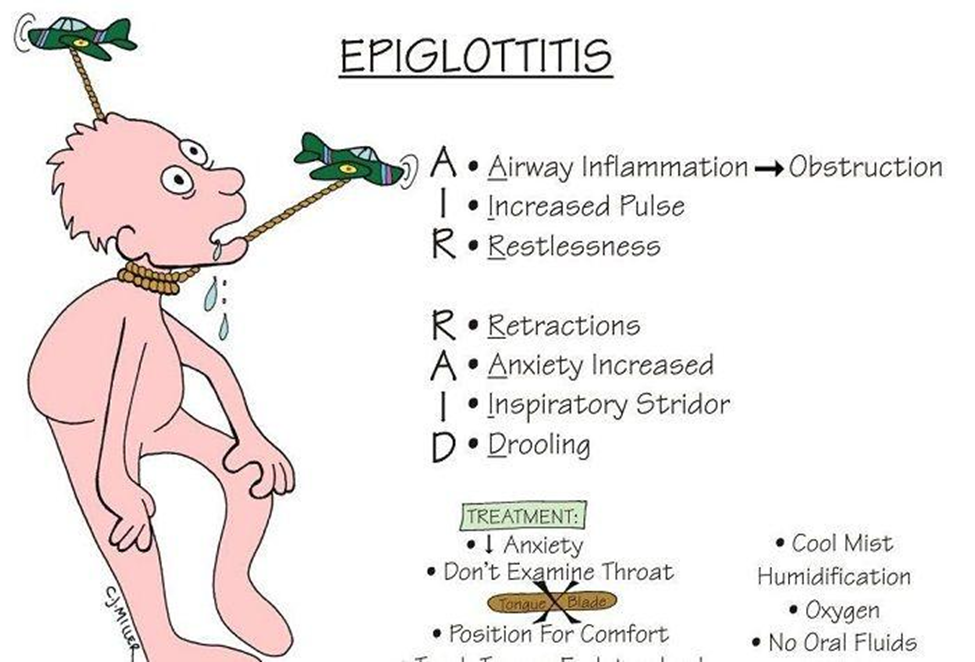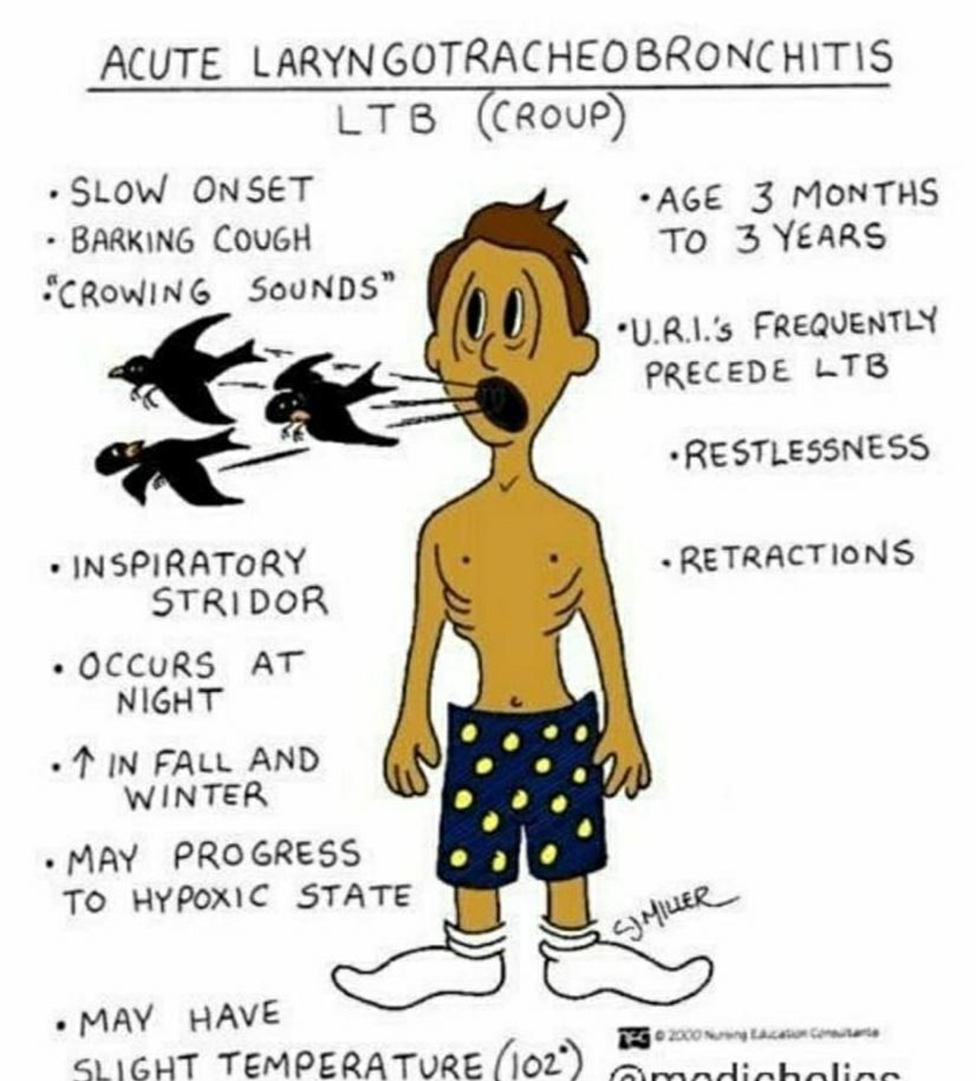The nurse in the emergency department is caring for a child who appears extremely ill with a high fever, unable to control their oral secretions. with voice hoarseness and inspiratory stridor and inspiratory sternal retractions while breathing. The nurse suspects epiglottitis. Which would the nurse do next?
Contact the assigned emergency room physician to evaluate the need for an advanced airway
Administer intravenous corticosteroids
Obtain a throat culture
inspect the throat to obtain further data to support the diagnosis
The Correct Answer is A
A. Contact the assigned emergency room physician to evaluate the need for an advanced airway
Explanation:
Epiglottitis is a medical emergency that can rapidly progress to airway obstruction. The classic signs and symptoms include a high fever, difficulty swallowing, voice hoarseness, inspiratory stridor, and sternal retractions. Immediate intervention may be necessary to secure the airway. Therefore, contacting the emergency room physician to evaluate the need for an advanced airway (such as intubation) is a priority.
B. Administer intravenous corticosteroids
Explanation: While corticosteroids may be used in the management of epiglottitis to reduce airway inflammation, securing the airway is the priority in the acute phase. Corticosteroids would typically be administered after securing the airway.
C. Obtain a throat culture
Explanation: Obtaining a throat culture is not the immediate priority in the case of suspected epiglottitis. Prompt intervention to secure the airway takes precedence over diagnostic tests.
D. Inspect the throat to obtain further data to support the diagnosis
Explanation: Direct visualization of the throat (inspection) may exacerbate the airway obstruction and is not recommended in the acute management of suspected epiglottitis. The priority is to secure the airway while minimizing agitation and discomfort for the child. Diagnostic procedures, such as obtaining a throat culture, can be considered after the airway is stabilized.

Nursing Test Bank
Naxlex Comprehensive Predictor Exams
Related Questions
Correct Answer is C
Explanation
A. A period of play in the playroom:
Incorrect: While play is generally therapeutic, simply engaging in general play may not directly address the child's distress related to the insulin injection.
B. A video game:
Incorrect: Playing a video game might serve as a distraction, but it may not specifically help the child cope with the distress of the injection in the way that hands-on play with a needleless syringe and a doll can.
C. A needleless syringe and a doll:
Correct Answer: Correct.
Explanation: Allowing the child to play with a needleless syringe and a doll provides a hands-on, interactive experience that can help the child become more familiar and comfortable with the idea of injections. This play activity allows the child to express and understand their feelings in a safe and controlled environment.
D. A story book about a child who has diabetes:
Incorrect: While a storybook can be educational and provide information, it may not directly address the child's immediate distress after an insulin injection. The hands-on play with a needleless syringe and a doll is more focused on the specific experience of receiving injections
Correct Answer is B
Explanation
A. The child is too young to receive antibiotics: This statement doesn't address the actual reason for not prescribing antibiotics for croup, which is primarily due to its viral nature.
B. "Antibiotics are not indicated unless a bacterial infection is present."
Explanation:
Viral laryngotracheobronchitis, commonly known as croup, is typically caused by a viral infection, most commonly by the parainfluenza virus. Antibiotics are not effective against viruses. Therefore, unless a bacterial infection is also present, prescribing antibiotics is not necessary or beneficial in treating croup.
C. The child may be allergic to antibiotics: While antibiotic allergies are a consideration, it doesn't explain why antibiotics are not prescribed for viral illnesses like croup.
D. The child still has the maternal antibodies from birth and does not need antibiotics: Maternal antibodies can offer some protection against infections, but the primary reason for not using antibiotics in viral infections like croup is because antibiotics are ineffective against viruses.

Whether you are a student looking to ace your exams or a practicing nurse seeking to enhance your expertise , our nursing education contents will empower you with the confidence and competence to make a difference in the lives of patients and become a respected leader in the healthcare field.
Visit Naxlex, invest in your future and unlock endless possibilities with our unparalleled nursing education contents today
Report Wrong Answer on the Current Question
Do you disagree with the answer? If yes, what is your expected answer? Explain.
Kindly be descriptive with the issue you are facing.
